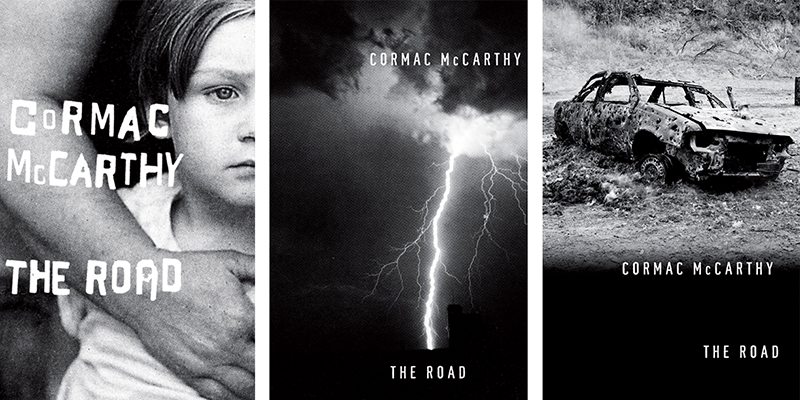Ivette Cruzado
Is Cormac McCarthy’s The Road an Engineering Project?
Tinta regada
1 de mayo de 2025

As part of the STEM to STEAM project, I was invited to think about a novel—Cormac McCarthy’s The Road—and reflect on the book, giving it a perspective from an engineering point of view. This was a surprisingly entertaining task. In the beginning, I was worried about how to achieve the objective that was given to me; after all, as a professor of engineering, what do I really know about the humanities? About literature? And although the title of the book written by McCarthy is related to my specialization (Transportation Engineering), it still seemed like a big challenge. However, the result was an exquisite one.
Cormac McCarthy was known from his dark novels; after his death newspapers and magazines referred to him as “novelist of a darker America” and “haunting novelist”. McCarthy’s The Road was described as “an unflinching meditation on the word and the best we are capable of: ultimate destructive, desperate tenacity…” This part may have soothed me a little bit since I love horror movies. But I was not ready for how depressing the book would make me feel. The Road starts with a perfect world, which rapidly turns into a dream, and we can see that the environment around the characters is far from perfect. The main characters – father and son – gather their belongings to continue their journey to the south, looking for food and supplies. To my surprise, right there in the beginning, was the basic definition of transportation: the movement of people and goods from one point to another.
As the book progresses, father and son continue down the road, with their ups and down, encountering good people as well as bad people, taking risks that sometimes were dangerous and sometimes were rewarding. I didn’t get too far when the idea of the road being our life journey came to me. Once I considered my life to be a physical road, I was able to incorporate the engineering concepts when designing highways.
A well-designed highway is efficient (no congestion) and is safe (no fatalities). In the road of life, many people join you at some segments, some people interact with you in a safe manner, while others are disruptive and even dangerous. There are risks that we will encounter take down the road, either while driving or as a passenger, if we want to continue our journey to our destination. As I kept reading, more questions arose amid these different aspects, and I asked these questions to the audience.
Perhaps my favorite question was: are we designing our own highway or are we following someone’s design? As someone who always seemed to be “steering” away from the “traditional” road (I never wanted to get married nor to have kids), my choices were always met with skepticism, denial, and even condescension. Although I knew there were the right decisions for me, other people could not understand my choices in life. Hopefully this means that I am the designer of my life and that I am designing it to be efficient and safe according to my goals.
While giving the presentation and asking these questions to the audience, I was trying to be aware of which questions raised their level of engagement. I could see sometimes the audience nodding their heads or their eyes getting bigger. At one moment I asked, “are you the father or the son?” as the two main characters see life in such a different way. The father, maybe due to his experience, distrusts people but is willing to take more risks. The son, on the other hand and maybe due to his innocence, believes in the good of people but is afraid of new situations. The audience grew silent, but based on their faces I knew they were thinking about their answer.
However, one question that made the audience engaged was: “does everyone in life has to have a purpose?” If the purpose in the novel of taking the road was to arrive to the south where is warm, what exactly could be the purpose of life? And does everyone need to have the same purpose? The audience engaged in a vivid discussion about goals, including those imposed by our family, friends, and even society.
In the end, I very much enjoyed preparing the presentation and having these deep dialogs with the audience; I especially appreciated the personal stories shared by those in the room. Possibly I became too philosophical and derailed from the engineering point of view, as the audience wanted to discuss more about the issues of the transportation infrastructure. But this is evidence that, when finding the relation between the humanities and the engineering, we can go from STEM to STEAM.
Ideas for a transdisciplinary curriculum:
- From what I learned:
- Always give an introduction to the engineering area you want to discuss first.
- Slowly incorporate some aspects; alternate them along the discussion.
- Never derail too much from the engineering perspectives.
- Other ideas:
- Try doing it the other way: I give you an engineering concept and you try to come up with the best novel that could be related. Example:
- In roadside design, there needs to be “obstacles” along the side of the road, such as utility poles. If they represent a hazard (i.e. there are many accidents with the pole), there are some strategies to consider: remove it, relocate it, and shield it. This makes me think of “Valley of the Dolls”.
- Also: when there is a problem in engineering to be addressed, you must come up with a serious of alternative and evaluate all of them (and compare them among each other). One of the alternatives must be “do nothing” and it can be chosen if the other alternatives do not “measure up”.
